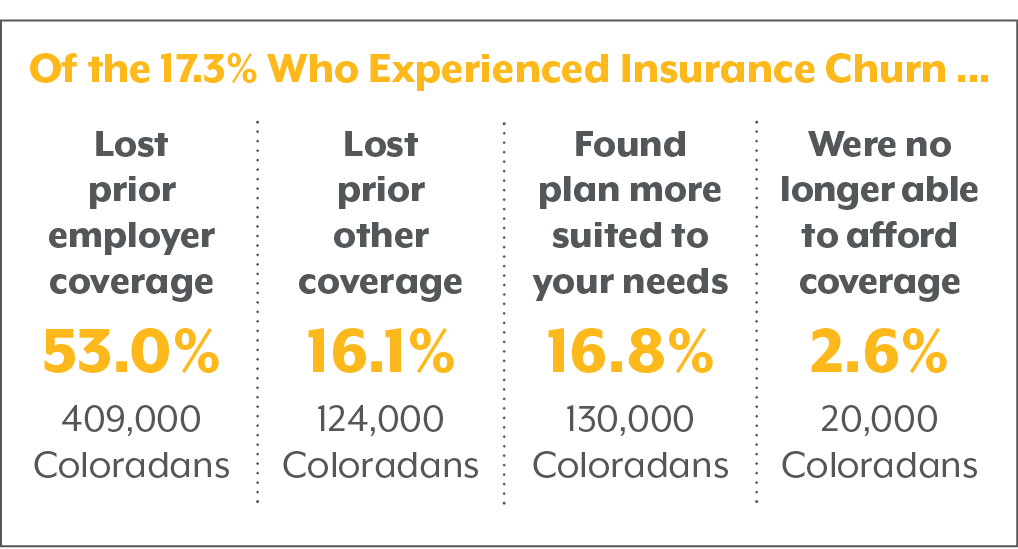The Uninsured
Colorado’s uninsured rate remains steady at 6.5 percent, or 361,000 Coloradans. But the uninsured rate varies across the state, from 2.6 percent in Jefferson County to 14.3 percent in the I-70 mountain corridor, where insurance premiums are most expensive.
Policy also plays a role in insurance rates. For instance, while young adults in their twenties (sometimes referred to as “young invincibles”) are often perceived as more likely to be uninsured, Coloradans in their thirties and forties are actually more likely to go without coverage in 2019. This may be because young people can stay on their parents’ insurance plans until age 26.
Coloradans with incomes between 139 and 400 percent of the federal poverty level are more likely to be uninsured than those with lower incomes, most of whom are eligible for Medicaid, and those with higher incomes. Not all ACA programs, including Medicaid expansion, are available to all non-citizens.
For example, immigrants without documentation and non-citizens who have lived in the U.S. for less than five years don’t qualify for Medicaid coverage, regardless of income. One in four non-citizens (27.1 percent) are uninsured, compared with one in 20 citizens (5.8 percent).
Even though the uninsured rate has not changed since 2015, people’s reasons for being uninsured have. Cost has always been the biggest barrier to coverage in Colorado, but it’s increasing — nearly nine in 10 uninsured Coloradans (89.6 percent) cited cost as their reason for not having coverage in 2019, up from 78.4 percent in 2017. At the same time, more Coloradans are seeing the need for coverage than they were two years ago. The percentage of uninsured residents who say they do not need coverage fell from 23.6 percent in 2017 to 12.7 percent in 2019. In recent years, health insurance has been the subject of major federal policy debates, and this may have increased the visibility of health insurance’s benefits.




